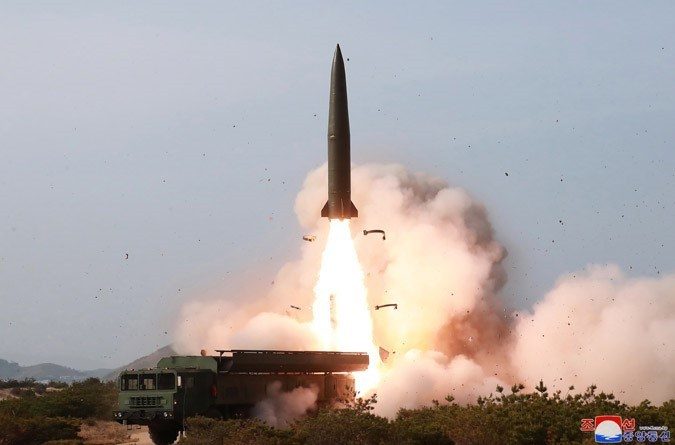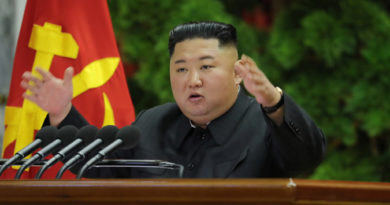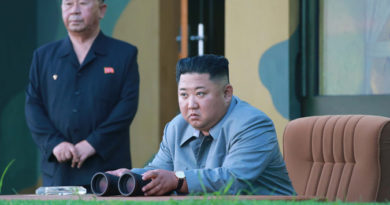North Korea Testing US Resolve
The DPRK tested two probable KN-23 SRBMs early Thursday morning. These missiles (jokingly called Kimskander) seem to be based off of the SS-26 Iskander, indicating probable Russian aid in design and development. The Iskander is launched from a TEL and has a length of 7.3m with a diameter of .92m. Additionally, it has a range of 400-500km and can carry a payload between 480kg-700kg. The KN-23 is also launched from a TEL and has a length of 7.5m with a diameter of .95m. This missile can carry a 500kg payload and has a range of 420-450km. The KN-23 was first tested on 4 May, reaching an apogee of 60km and a range of 240km. Then, on 9 May, the DPRK tested two more KN-23s, which reached an apogee of 50km and ranges of 420km and 270km, respectively. According to the ROKJCS, the most recent launches occurred at 0534 and 0557 local and reached distances of 430km and 690km, respectively.
KN-23 Capabilities
Today’s missile launches originated near Wonsan, similar to the previous launches. Planet Labs captured imagery of the 4 May launch at 1054 local.
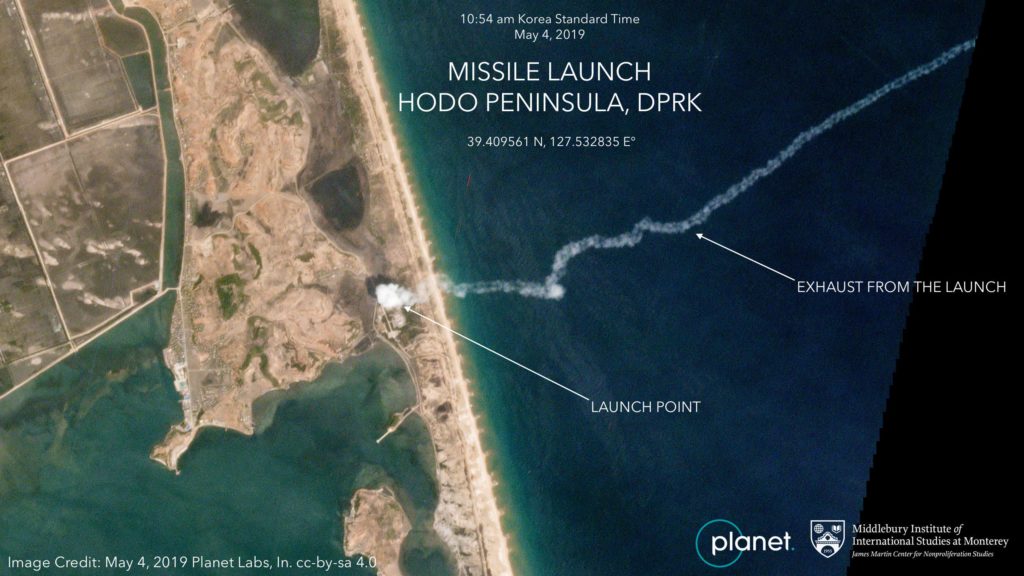
These missiles are able to be maneuvered during their ballistic trajectory while traveling at a low altitude, likely below the detection capabilities of deployed THAAD assets. Also, the differing flight ranges with similar apogees may demonstrate different simulated payloads: one heavy conventional payload, and one lighter nuclear payload. The low altitude and high mobility of this weapon system allows for rapid redeployment and multiple launches before detection. Also, the range of this missile puts all USFK assets at risk and may include MCAS Iwakuni.
The DPRK has previously simulated nuclear attacks against MCAS Iwakuni during the annual Foal Eagle exercise — meant to test readiness and interoperability in the event of a DPRK invasion — which President Trump cancelled earlier this year.
DPRK Motivations
The KCNA recently released images of KJU touring a “new” submarine capable of carrying nuclear weapons.
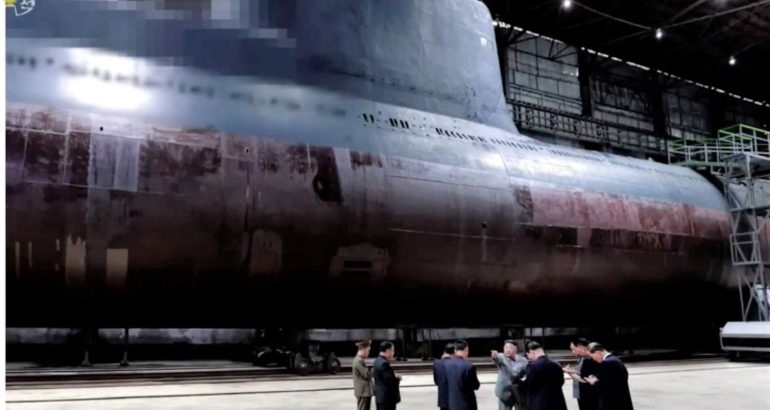
This modified Romeo class submarine would likely carry KN-11 SLBMs, which were successfully tested on 24 August 2016. Of note, the DPRK test fired the KN-11 as the annual Ulchi-Freedom Guardian exercise (also cancelled by Trump this year) was underway.
Thus, the touring of a “new” nuclear-capable Romeo class submarine was likely intended to signal the DPRK’s nuclear capabilities. Thursday’s KN-23 launches further underscore the claimed nuclear capabilities of the DPRK, without conducting an official nuclear test. The DPRK has indicated the possibility of foregoing its nuclear/ICBM moratorium in response to next month’s 19-2 Dong Maeng exercises, which appears to be on track to begin mid-August. Further, President Trump told reporters during his meeting with Pakistani Primer Minister Imran Khan that “There’s no rocket testing. There’s no missile testing… and we have a very, very good relationship.” Previously, Trump indicated that he was not bothered by SRBM launches, which allows the North Koreans to test anything short of an ICBM, despite UNSCRs to the contrary. Therefore, the North Koreans are ramping up pressure and expressing their frustration at joint US-ROK exercises while staying below the threshold given by Trump.
Additionally, the launching of SRBMs and the ambivalence of the Trump Administration signals to regional states that they are vulnerable to DPRK attack. President Trump has indicated that he isn’t bothered by SRBMs, but these missiles place the ROK and Japan within range of a nuclear strike. The joint PRC-Russian bomber patrol on Tuesday further underscores that point. Recognizing this, the pro-engagement commentariat are pushing for a “diplomatic solution,” which the DPRK has a past track record of exploiting. On 4 July 2006, the DPRK launched:
- Three Rodong MRMs capable of hitting all of Japan
- Two Scud SRMs capable of hitting all of the ROK
- One UI MRM
- One Taepodong-2 ICBM capable of hitting the Westcoast of the US
At the time, President Roh slept through the missile launches and his Unification Minister, Lee Jong Seok, indicated that missiles shot into the East Sea posed no threat to the ROK. In fact, following those missile tests, President Roh urged President Bush to soften sanctions on the DPRK. Similarly, the pro-engagement crowd are once again pushing for capitulation.
South Korean Response
Initially, the ROKJCS indicated that the DPRK fired two “unidentified projectiles” into the East Sea, in line with earlier statements after the May launches. However, later statements from the ROKJCS and the ROKNSC referred to the projectiles as short-range missiles. Surprisingly, the Blue House also acknowledged these projectiles as SRBMs, though like the 4 July 2006 tests, President Moon was absent from the National Security Office meeting. It would appear that the Moon Administration, having decided to go all-in on DPRK engagement, is left unable to acknowledge that their policy has been unfruitful.
Conclusion
President Moon has implemented disastrous economic policies and only made symbolic gestures — replacing his top economic advisors — to acknowledge his failures. He came into office hoping to revitalize the economy and improve relations with the DPRK, but has been unable to accomplish either of these goals. It is time for Moon to recognize the reality of the DPRK threat and stop rewarding provocative behavior. Likewise, it is time for President Trump to acknowledge the DPRK’s blatant violations of Security Council Resolutions and show American leadership in the region. The US and the ROK must continue the 19-2 Dong Maeng exercise, but should also announce the revival of next year’s Key Resolve and Foal Eagle exercises.
Also, the KN-23 missile launch and Tuesday’s bomber patrol demonstrate the need for intelligence-sharing within the trilateral security framework. To this end, the Moon Administration should abandon any thoughts of dismantling the GSOMIA and should work with the Abe Administration to resolve the “forced-labor” and “comfort women” issues. Accordingly, as demonstrated by the ROK’s willingness to conduct live fire in defense of Dokdo, the Japanese should consider giving up territorial claims to the Liancourt Rocks. These issues must be addressed at the upcoming ASEAN Regional Forum in Bangkok.
While the US and the ROK have been engaged in diplomacy, the DPRK has been expanding its ballistic missile sites, deploying ballistic missiles, and expanding its SLBM capabilities. President Trump cannot afford to continue kicking the can down the road and allowing the North Koreans to build their weapon systems capabilities while engaging in actions that will ultimately lead to USFK and UNC withdrawal. Doing so will only result in an undefended South ripe for the taking by the North, and the failure of an alliance “forged in blood.”
Featured Image: ROKMOFA

